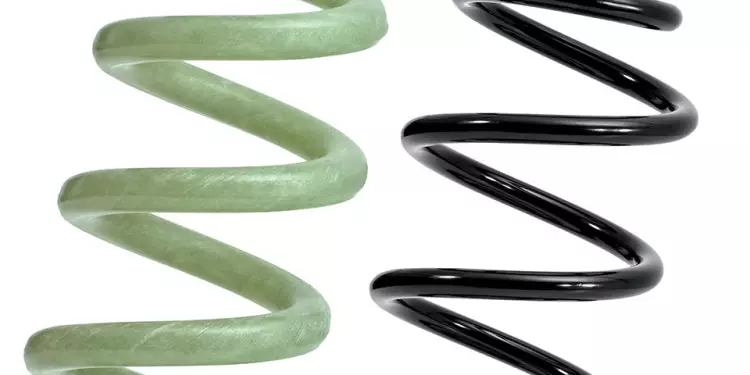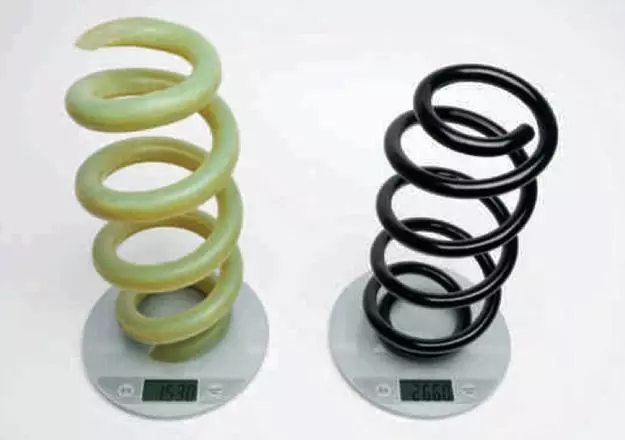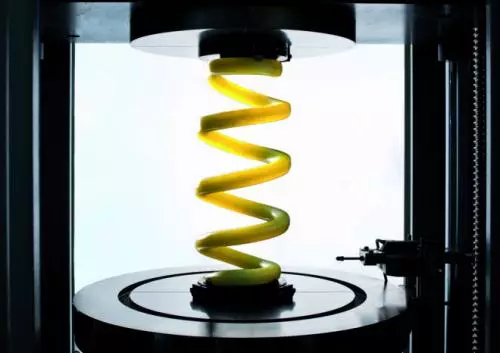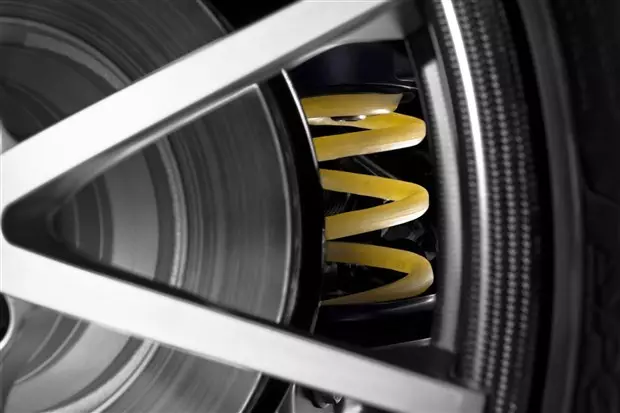Audi decided to take another step forward, in terms of automotive innovation, with a concept that is nothing new in the automotive industry but that brings great benefits. Discover Audi's new fiberglass springs.
In parallel with the investment in the development of increasingly efficient engines and composite materials that allow to reduce weight, while increasing the structural rigidity of chassis and bodies, Audi is again turning to composite materials, for application in other components .
SEE ALSO: Toyota presents innovative idea for hybrid cars
Audi is committed to developing and massifying this technology, all with a single purpose: to save weight, thereby improving the agility and handling of its future models.
This is the new fad of Audi's research and development department: the helical fiberglass and polymer reinforced compression springs . An idea that had already been applied by Chevrolet, in the Corvette C4 in 1984.

The growing concern with suspension weight, and with the influence of excessive weight of suspension elements on performance and consumption, led Audi to focus on the development of lighter suspension schemes. These should bring clear gains in terms of weight, improved consumption and better dynamic response from its models.
NOT TO BE MISSED: Wankel Engine, pure state rotation
This engineering effort by Audi, with Joachim Schmitt at the head of the project, found the ideal partnership in the Italian company SOGEFI, which holds the joint patent for the technology with the Ingolstadt brand.
What is the difference with conventional steel springs?
Joachim Schmitt puts the difference in perspective: on an Audi A4, where the suspension springs on the front axle weigh up to 2.66kg each, the new fiberglass reinforced polymer (GFRP) springs only weigh 1.53kg each for the same set. A weight difference of more than 40%, with the same level of performance and additional benefits that we will explain to you in a moment.

How are these new GFRP springs produced?
Returning a little to what are coil compression springs, they are designed to accumulate forces during compression and exert them in the direction of expansion. They are usually produced from steel wire, with a cylindrical shape. When it is necessary to apply higher torsional forces in smaller spaces, the wires are molded with other shapes, including the parallel helical, thus forming a spiral at each end.
The structure of springs
The structure of these new springs has a core that develops through a long roll of fiberglass, interwoven and impregnated with epoxy resin, where later a machine is responsible for wrapping the spirals with additional composite fibers, at alternate angles of ±45° , relative to the longitudinal axis.
TO REMEMBER: This is how the Nissan GT-R engine is produced
This treatment is of special importance, since it is through the interaction between these mutually supporting layers that it will give the spring additional compression and torsion properties. In this way, the torsional loads through the spring are converted by the fibers into elasticity and compression forces.

The final stage of production
In the final production phase, the spring is still wet and soft. It is at this point that a metallic alloy with a low melting temperature is introduced, and then the spring in GFRP is baked in an oven at more than 100°, so that the metallic alloy can fuse in harmony, with the hardening of the fiberglass .
What are the advantages of these GFRP springs, compared to traditional steel ones?
In addition to the obvious weight advantage of around 40% per spring, GFRP springs are not affected by corrosion, not even after many kilometers with scratches and cracks evident in their structure. Furthermore, they are completely waterproof, that is, resistant to interaction with other abrasive chemical materials, such as cleaning products for wheels.

Another of the advantages of these GFRP springs is related to their reliability and durability, where they have been shown in tests to be able to run 300,000 km without losing their elastic properties, largely exceeding the useful life of their suspension set partners, the shock absorbers.
MOT TO SPEAK: All the details of Mazda's new 1.5 Skyactiv D engine
This is the initial process with which Audi has produced its test prototypes, before starting to produce thousands of these components annually.
According to the brand of rings, producing these springs in composite material requires less energy than traditional steel springs, however, their final cost is slightly higher, which is a factor that could slow down its massification for a few more years. By the end of the year, Audi is expected to announce these springs for a higher-end model.
